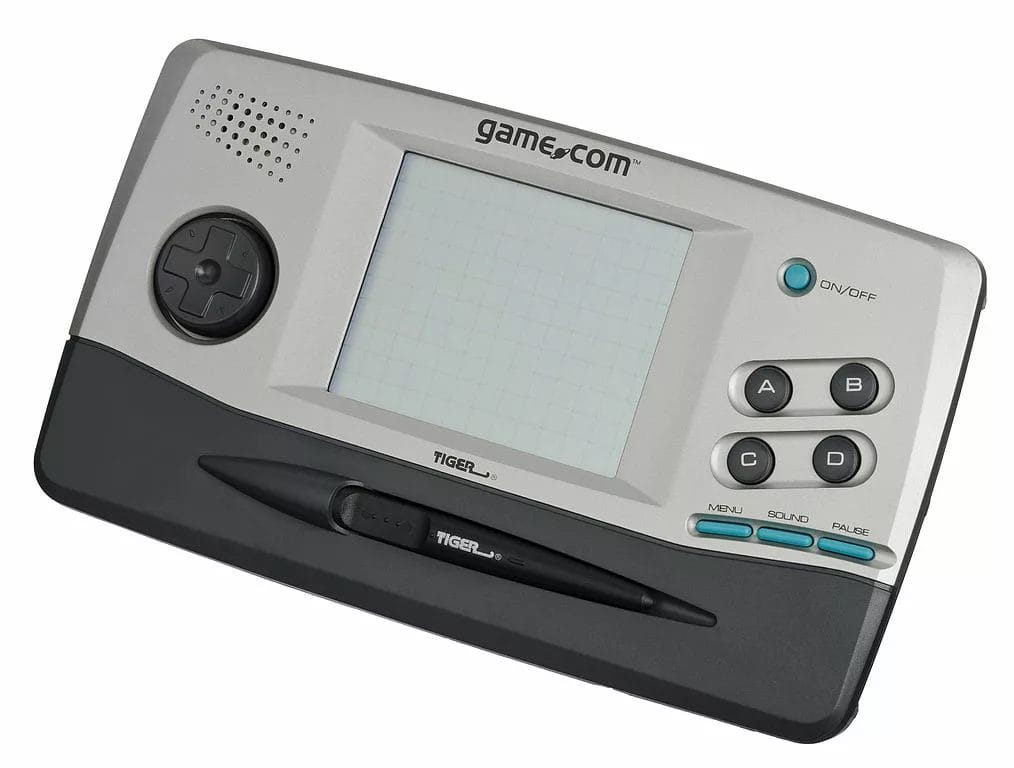A glossary for the industry.
AAA (Triple-A): Games produced and published by medium to large publishers that are not usually classified as “indie”.
Agent: a character or object in a game that uses artificial intelligence to interact with other objects in the environment..
AI: Artificial Intelligence, an entity in a game whose operation is based on computer code rather than human input; NPCs are common AI entities.
Alpha: A version of a game that contains all the key features and most of the tools. This version is usually distributed internally to test game quality and bugs..
AR / VR / MR / XR:Augmented Reality, Virtual Reality, Mixed Reality, Augmented Reality.
Asset: Abbreviation for anything in a video game, including characters, objects, sound effects, tracks and environments.
Baking: Pre-processing on game assets and data to ensure that they load in real time, improve performance, and do not slow down gameplay by requiring too much CPU or GPU power.
Balance: Creating a stable and predictable gameplay experience. For example, ensuring that weapons deal the right amount of damage and armour absorbs that damage properly, as opposed to one weapon being significantly more powerful than another, or a level being too difficult to complete in a fun way. However, unbalanced gameplay can also be intentional.
Beta: A version of the game that includes all the major features and tools. This version of the game contains no major bugs and is on its way to code release. Beta versions may be made available to the public on a limited basis for bug reporting and critical feedback.
Bug: A development issue that makes the game unenjoyable, unstable or currently unplayable.
Build: Game developer term for a “version” of a game. Also called “release” or “release candidate”.
Q&A The process by which console manufacturers test their games to ensure compatibility with hardware and distribution platforms. It does not include game testing or quality assurance.
Cinematics/cutscenes: Parts of the game that the player cannot control. Usually used to draw attention to important points in the story.
Clipping: The process of pre-defining areas of the game where rendering will take place and optimising the game’s performance in those areas.
Clipping region: an area of the game optimized for rendering GameObjects and landmarks.
Code: A computer language used to create and define software functions; Unity uses C# (C Sharp) to code games.
Code release: A version of a game that can be sent to the console manufacturer for validation.
Collision: a collision. The contact or collision of two objects in a game. Even for a player character to stand on the floor of a house, collision parameters are required for both the character’s feet and the floor, otherwise the character would simply fall through the floor.
Collision detection:The process that determines when and where an object “collides” with another object in the game. This is usually done using objects called hitboxes, which determine which areas to hit to prevent or cause collisions.
Console: A type of personal computer designed specifically for gaming; Sony PlayStation, Microsoft Xbox and Nintendo Switch are all examples of consoles.
Content: Everything that makes up a game, including assets, components, GameObjects and scripts.
Cross-platform: Anything that can be run or used on different platforms.
Culling: Finding and removing bugs in a game. Sometimes also called bug fixing.
Debug: Finding and removing bugs in a game. Sometimes referred to as “bug-bashing.”
Demo: A proof-of-concept version of a game, usually released to the public for promotional or feedback purposes.
Dev: casual word meaning “developer” or “game developer” or “indie game developer”.
Edge: the connection between two vertices of a corner.
Engine: See game engine.
Event: An action of the game that is completed by the user’s input. If the player presses a button on the controller and a character on the screen jumps, it is considered an event.
Feature: Any aspect of the game that creates a value or goal. Mechanics, story, and path design all count as features.
Game design document (GDD): A professional document created by game developers to fully define and justify the game they’ve created or plan to create, usually as part of their pitch to a publisher. The story, gameplay, characters, level design, and other integral pieces of a game are laid out and described in a game design document.
Game designer: One who designs the aesthetic and structure of a game. NOTE: The terms “game designer” and “game developer” are often used interchangeably, though the two roles technically vary.
Game developer: One who turns a game design into a playable game through coding and in-engine asset creation. NOTE: The terms “game designer” and “game developer” are often used interchangeably, though the two roles technically vary.
Game development: The act of creating a game; sometimes referred to as “gamedev.” The game development process typically requires input from one or more game designers, artists, programmers, animators, testers, project managers, etc., though some games have been created by just one or two game developers.
Game engine: Software that offers a suite of tools and features to game developers in order to build their games professionally and efficiently.
Gold master: A game that has met all publisher and platform requirements, includes all assets and features, and is considered ready for launch.
Hitbox: An invisible object created around another GameObject that determines the area where collisions with other objects will occur.
Keyframing: In game development, the act of putting an asset into a standalone frame of action and capturing that moment, to be followed by others, until there is a series of these frames to effectively convey animation of the asset.
Lightmap: A pre-rendered lighting system that is stored for continual use in a game.
Localization: Translating a game into multiple languages.
Mechanics: The essential functions, rules, and outcomes that create gameplay. Mechanics are what make a game rewarding, entertaining, and interactive.
Mesh: A collection of vertices, edges, and faces that act as the foundation of a model in a video game.
Mobile: A handheld device with the computing power of a personal computer and features for real-time voice and data communications.
Mobile gaming: Because you can play a mobile game almost anywhere, mobile gaming is one of the most popular forms of gaming in the world.
Model: A fully 3D asset in a video game that is created by adding textures and other features to a mesh.
Multiplatform: Compatible with more than one kind of hardware or operating system.
Parallax: A technique used in 2D game development where background images move at a different speed relative to their foreground counterparts during player/scene movement, creating depth and scale.
PC: Abbreviation for personal computer, typically referring to a desktop or laptop computer. Many gaming enthusiasts prefer PC gaming over console or mobile gaming due to its increased performance abilities and customization options.
Physics: Utilizing real-life laws of physics in games to make movement and environmental behaviors more realistic.
Pixel: The smallest building-block of a screen image; a single point of light or color that, when combined with other pixels, forms a picture or larger graphical element.
Pixel art: A design style that is typically limited to 8 and 16-bit graphics in order to closely match classic arcade and console graphics.
Playtesting: Playing through each new build of a game in order to find bugs, ensure gameplay flow, and explore potential opportunities for improvement.
Polygon: A computer-programmed series of lines that form a three-dimensional (3D) object.
Prop: Interactive objects in a game.
Prototyping: Creating different early versions of a game to explore different mechanics and features to decide which will be best for the full game.
Quality assurance (QA): Testing a game for its overall quality, which normally includes finding and eliminating bugs.
Ray tracing: A light-rendering technique that simulates the interaction of light with objects in a game in such a way that it looks ultra-realistic.
Render: The act of continuously generating and refreshing a 2D or 3D image through computer processing.
Scripting: Another word for coding or programming; the act of writing code.
Shaders: Small programs within larger game development processes typically used to control lighting and shadow effects.
Skeletal animation: A type of computer animation that puts a set of “bones” inside a mesh, allowing the otherwise static mesh to be articulated and posed for animation keyframing.
Sprite: Bitmap images, often used as 2D GameObjects. In 3D, sprites generally function as textures.
Terrain: Anything that creates the environment in a video game.
Texture: A visual wrapping placed around GameObjects, such as the skin on a character.
Texture mapping: The process of applying textures to GameObjects.
Tile: An image that is used to create other, bigger images (such as a platform) in a 2D game.
Tilemap: A system that stores and handles tile assets for creating 2D levels.
UI/GUI: User interface / graphical user interface. Menus, inventories, and other non-game interactive systems on-screen.
UX (for game development): User experience. Ensuring that the design and implementation of a game is pleasing and user-friendly.
Vector graphic: A type of graphic image that uses two-dimensional points to connect lines and curves, allowing it to be scaled and customized.
Vertex: A point in 2D or 3D space. Joining two vertices together forms an edge.
Vertical slice: A proof-of-concept portion of a game, typically given to investors or publishers for a chance at receiving funding and partnerships.
Visual scripting: A method of organizing and generating code visually, where developers can create and connect graphical nodes to organize different GameObjects, events, programs, etc.


